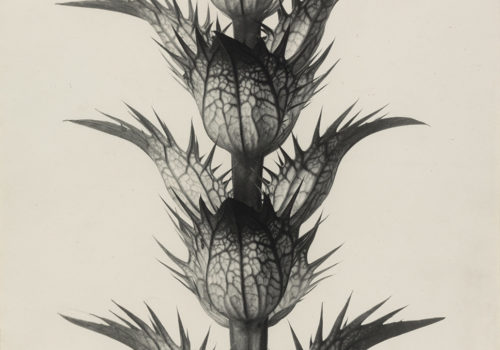(5/5) Throughout the exhibition, which takes place at the Jeu de Paume in Paris, of the exceptional Walther collection bequeathed to Moma, L’Œil de la Photographie focuses on one masterpiece in particular. Today, vegetal typography.
Acanthus is a perennial plant that is known for its protruding spines that can be painful. It has therefore quickly symbolized in history the blows that we can receive without expecting it and at the same time the strength to withstand all the trials inherent in life. The plant is also nicknamed “branc-ursine” because it is said to be shaped like a bear’s paw and its fearsome claws, making her strange presence even more meaningful.
She became the great inspiration for the Greek architects who propagated the style of the Corinthian column whose capital marries features similar to the plant photographed here.
Maybe Karl Blossfeldt knew it, maybe he didn’t, but he still had enough foresight to guess that capturing its silhouette was exciting for our eyes. The German photographer (1865 – 1932) first studied sculpture before becoming a caster in an industrial foundry, already interested in the forms of plants which are like miniatures structures of our human architectures. Starting to learn photography, he began this vast inventory taking very close-up portrait of the plants that surround us in order to reveal them, as Ernst Haeckel would do with his illustrated plates, the incredible design of nature and at the same time questioning us about our links with it, even in the most urban setting.
In Paris, at the same time, Hector Guimard was using the design of plant stems to make the entrances of subways, accentuating the art deco beauty of the City of Light and of a century decidedly turned towards the sky.
Jean-Baptiste Gauvin
Photographic masterpieces from MoMA
The Thomas Walther collection
From September 14, 2021 to February 13, 2022
Jeu de Paume
1, place de la Concorde
75001 Paris
















